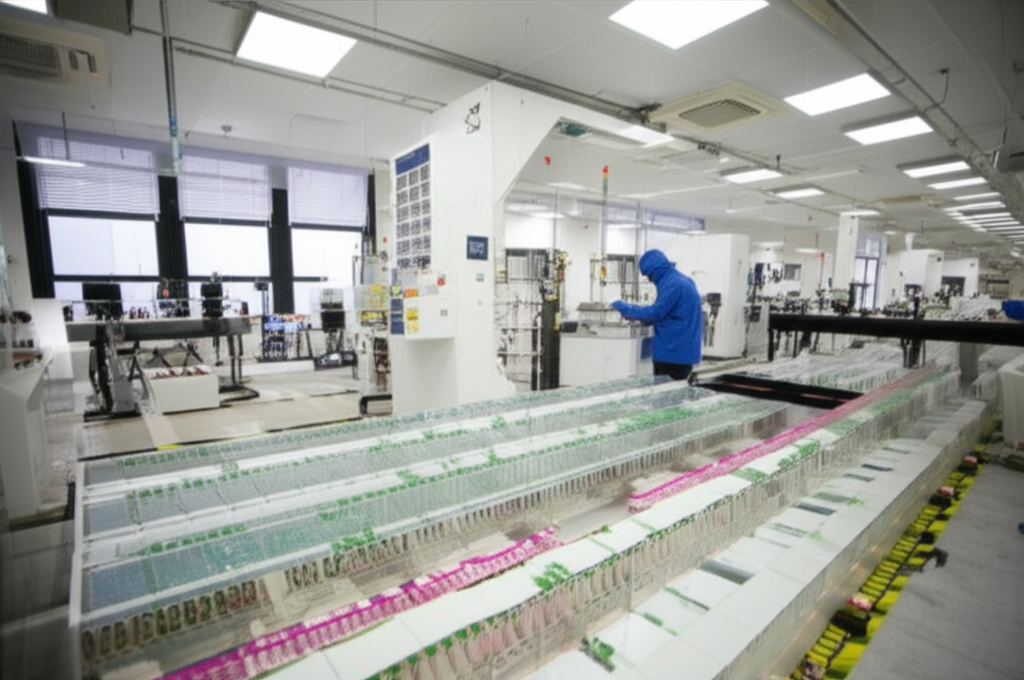A groundbreaking continuous manufacturing process for synthesizing vital organic chemical 2-naphthol promises significant improvements in yield, efficiency, and environmental performance compared to traditional methods. Addressing long-standing challenges in industrial production, this novel technique overcomes the limitations of conventional sulfonation-alkali fusion processes.
2-Naphthol, a cornerstone organic chemical intermediate, is indispensable in manufacturing over 130 varieties of dyes and pigments, more than 20 dye intermediates, pharmaceuticals like the anti-inflammatory naproxen, pesticides such as napropamide, rubber additives, and increasingly, materials for liquid crystals and photosensitive compounds. Despite its extensive applications, the dominant production method, sulfonation-alkali fusion, remains plagued by batch processing, excessive waste generation (high Biological Oxygen Demand effluent), severe equipment corrosion, significant energy demands, and labor-intensive operations due to its multi-step, discontinuous nature.
The core innovation lies in a sophisticated integrated continuous reaction system. This process initiates with molten naphthalene being fed continuously into a cascaded multi-stage sulfonation reactor system (comprising at least three reactors) along with concentrated sulfuric acid. Crucially, a mild reduced pressure environment (140-170°C, optimally 160°C) is maintained throughout sulfonation to efficiently strip away reaction water in situ. This dehydration actively drives the equilibrium towards predominantly forming the desired 2-naphthalenesulfonic acid over its isomer. This design fundamentally replaces inefficient batch reactors.
The sulfonated material undergoes a streamlined neutralization using dilute alkalis like sodium hydroxide, carbonate, or sulfite directly in a neutralization vessel, crucially retaining byproduct impurities instead of complex removal steps. Following partial evaporation for dehydration, the mixture proceeds directly to the alkali fusion step in a dedicated fusion kettle. Fusion occurs at elevated temperatures (250-350°C, optimally 320°C), generating sodium naphthoxide salts.
Key to enhanced efficiency is the subsequent solvent extraction stage. After acidifying the fusion product with dilute sulfuric acid or sulfur dioxide in an acidification vessel to liberate free naphthols, the aqueous mixture enters an extraction column where organic solvents like tributyl phosphate (TBP), toluene, trioctylamine, or specific blends (e.g., TBP:Toluene 1:1 v/v) selectively extract both 1-naphthol and 2-naphthol from the aqueous phase. This direct extraction step replaces traditional steam stripping, markedly improving naphthol recovery rates.
The naphthol-rich organic phase (solvent-to-feed ratio approximately 2:1 by weight) enters a fractionating distillation column. Here, highly efficient separation occurs: the extraction solvent is recovered for reuse, while unreacted naphthalene is separated and recycled into the sulfonation reactor. Finally, the individual naphthols, 1-naphthol (a valuable by-product) and high-purity 2-naphthol, are isolated as distinct products through precise distillation control.
Transformative results distinguish this approach. Firstly, shifting from batch to true continuous operation dramatically increases throughput and operational stability. Secondly, eliminating intermediate purification steps (like steam blowing) and optimizing solvent extraction yields significantly higher recoveries. Thirdly, automated continuous processing improves labor conditions and safety. Most impactful, the process demonstrates an extraordinary reduction in environmental burden.
Operational trials confirmed 2-naphthol yields exceeding 85% and 1-naphthol yields above 8%, with both isomers consistently achieving purity levels surpassing 99%. Critically, the volume of wastewater generated is reduced to a mere 20-25% of that produced by conventional methods – representing a major advance in environmental sustainability. Simultaneously producing two high-value naphthol derivatives adds significant economic benefit.
This continuous, integrated synthesis marks a substantial technological leap for the organic chemical industry, particularly in dyestuff and pharmaceutical precursor manufacturing. By delivering higher productivity, superior product purity, significant byproduct valorization (1-naphthol), and a drastic decrease in polluting wastewater discharge, this breakthrough process promises enhanced efficiency and a notably reduced environmental footprint for essential naphthol production.

Manufacturing Facilities






Professional Export Experience
to Global Customers

1. 20 years of R&D, manufacturing and sales experience, serving customers in 60 countries and regions around the world;
2. Own R&D laboratory, pilot platform and large-scale production workshop, which can meet the audit requirements of global customers;
3. We can satisfy customers' perfect transition from small scale lab requirements (gram level) to commercialization requirements (hundred tons level).
A: We don't have Minimum Order Quantity, exact quantity should be provided before quotation for us to calculate the exact cost.
A: We don't provide free samples due to lots of request and expensive international courier's cost, we can deduct the sample charge after commercial order placed.
A: Our payment terms: Small or sample order: T/T IN ADVANCE. Commercial order: First order should be by T/T IN ADVANCE or L/C at sight, and following orders T/T 30~90days is acceptable subject to approval of credit application.